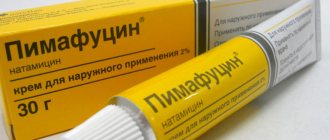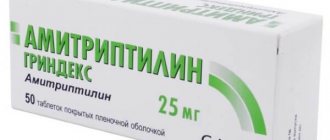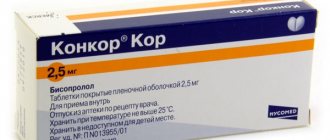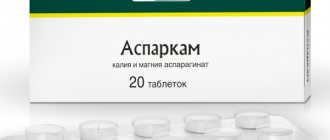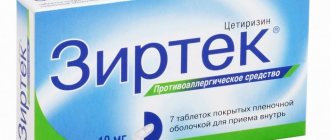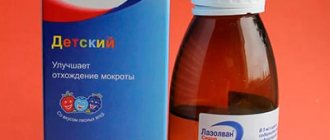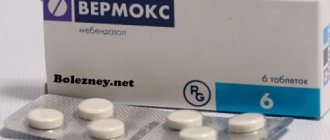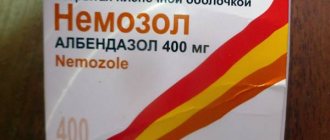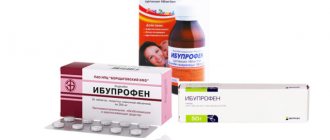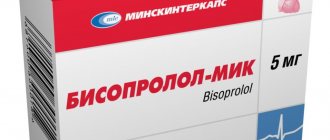Pharmacological effects
Milgamma is available in the form of tablets and ampoules. The injection solution contains cyanocobalamin, thiamine hydrochloride, and benzyl alcohol. The tablets contain benfotiamine, pyridoxine hydrochloride, povidone, talc.
Thiamine or vitamin B1, which is present in the injections, is transformed during metabolization into cocarboxylase. Without the latter substance, carbohydrate metabolism is impossible, which negatively affects the functions of neurons. Due to a lack of thiamine, carbohydrate metabolites accumulate. This leads to the development of various pathologies.
Unlike the annotation for injections, the instructions for use of Milgamma tablets indicate another active component - benfotiamine. It is involved in carbohydrate metabolism. Other substances included in the tablets:
- pyridoxine - promotes normal amino acid metabolism and the synthesis of active mediators, including adrenaline, histamine, serotonin;
- Vitamin B6 - participates in the formation of hemoglobin.
- pyridoxine - promotes normal amino acid metabolism and the synthesis of active mediators, including adrenaline, histamine, serotonin;
- Vitamin B6 - participates in the formation of hemoglobin.
The drug of any form is characterized by an antianemic effect. Milgamma stimulates the synthesis of choline and methionine. Effectively performs the functions of an analgesic. Thiamine is excreted in the urine. The active components of the drug accumulate not in tissues, but in the bone marrow, quickly penetrating the hematoplacental barrier.
When taking tablets, the fact that benfotiamine is absorbed into the duodenum is taken into account; this occurs due to active resorption and passive diffusion. Only a small concentration of it is absorbed in the middle and upper parts of the small intestine.
Since benfotiamine is a fat-soluble derivative of thiamine, it is absorbed more densely and faster than the water-soluble derivative thiamine hydrochloride. In the intestine, the component is converted into s-benzoylthiamine, which is characterized by high penetration and absorption. In this case, the component itself is not converted into thiamine.
Enzymatic debenzenization after the absorption process promotes the formation of thiamine. Pyridoxine, which is part of Milgamma, as well as its derivatives, are absorbed mainly in the upper gastrointestinal tract during passive diffusion. In blood serum, the substance binds to albumin. B6, B12 and B1 are excreted in the urine. About 50% of thiamine is excreted as sulfate or unchanged. The rest are metabolites.
Use of the drug
Milgamma in injections and tablets has a strengthening effect, so the drug is included in the treatment regimen for neuritis and neuralgia. The medicine effectively fights polyneuropathy of diabetic and alcoholic pathogenesis.
Other indications for use:
- herpes;
- facial nerve paresis;
- radiculitis;
- myalgia.
In practice, the drug was used for various studies. Milgamma has proven its effectiveness in the fight against multiple sclerosis, brain pathology, and hypovitaminosis. Studies have shown rapid reductions in the following symptoms:
- dysfunction of blood vessels and internal organs;
- impaired concentration;
- deficiency of vitamin B1, B12.
Some contraindications
The instructions for using Milgamma intramuscular injections contain a list of conditions when the drug is contraindicated. Therapy is not prescribed for children and adolescents under 16 years of age. The product should not be used by persons who are hypersensitive to B vitamins.
Other contraindications for use:
- impaired conduction process of the heart muscle;
- heart failure;
- pregnancy and lactation.
There is no data on the effect of the drug on the ability to drive a vehicle. It has not been established how it affects work that requires increased attention.
Treatment regimen
Treatment regimen
If the patient is prescribed Milgamma in injections, the initial dosage should not exceed 2 ml. The solution is administered intramuscularly once a day. During maintenance therapy, which lasts 2 days, injections are given once a day, 2 ml. If treatment is carried out orally, the patient is prescribed Milgamma Compositum. Dragees are taken 3 times a day for a month.
In acute cases of the disease, the drug is taken 1 tablet three times a day. The course of therapy should not exceed 4 weeks. If the patient's condition has improved, the doctor reduces the dose. It has been proven that taking vitamin B6 in large quantities provokes neuropathy.
Adverse reactions
Milgamma can cause rash, itching, Quincke's edema, and convulsions as adverse reactions. More often, patients complain of nausea, dizziness, and sweating. Exceeding the dosage leads to bradycardia. If you inject quickly, cramps will occur. In case of overdose, the symptoms of side effects intensify. If such a clinical manifestation occurs, it is recommended to undergo symptomatic treatment.
Side effect
- Dragee and solution - Rarely, tachycardia and arrhythmia may develop. Rarely do allergic reactions occur in the form of urticaria, skin rash, and even more rarely, severe reactions such as anaphylactic shock or Quincke's edema. Some patients note increased sweating and skin acne.
- Solution - confusion, dizziness, and occasionally convulsions may occur. In some cases, vomiting is observed. A local reaction in the form of irritation may also develop at the injection site.
Overdose - it is possible to develop reactions such as side effects to a greater degree of severity.
Interaction with other medications
Inactivation of vitamin B is possible in the presence of acetates, carbonates, and mercury chloride. The activity of the product decreases if the pH increases. Pyridoxine reduces the effectiveness of antiparkinsonian drugs, including Levodopa. If salts of certain heavy metals are present in the patient’s body, cyanocobalamin is activated.
It is forbidden to use Milgamma with sulfate solutions. With this reaction, thiamine breaks down completely. Against the background of the appearance of metabolites of this substance, inactivation of other vitamins that make up Milgamma occurs.
Under the influence of sulfites, the effect of all vitamins is suppressed. Numerous studies have shown that thiamine is incompatible with oxidizing and reducing agents, including iodides, acetates, carbonates, and riboflavin. When exposed to copper, thiamine is destroyed quickly. If the pH value is greater than 3, the active component of the drug loses its effectiveness. Milgamma cannot be taken with Nicotinamide. Otherwise, photolysis is accelerated and the effect of antioxidant substances is inhibited.
Since Milgamma contains neurotropic vitamins, it is prescribed for pathologies of the musculoskeletal system. Scientists have proven that thiamine enters the body through phosphorylation, turning into cocarboxylase + thiamine triphosphate. The first component is involved in normalizing the functions of the nervous system, improving conduction through neurons. Against the background of vitamin B1 deficiency, under-oxidized products accumulate in tissues. This leads to a pathological condition. This factor is taken into account by doctors in case of neurological diseases caused by vitamin deficiency.
Vitamin B6 is phosphorylated in the body, producing serotonin. Pyridoxine affects tryptophan metabolism, which is taken into account before treatment. Vitamins B6 and B1 have a potentiated effect on each other. Due to B12, there is an antianemic effect and the synthesis of choline and methionine. Cyanocobalamin is involved in metabolic processes, reducing pain. In this case, nuclein exchange occurs. Milgamma contains Lidocaine with a local anesthetic effect.
When is Milgamma prescribed?
The vitamin complex has a symptomatic, pathogenetic and strengthening effect on the body. It can be used in the treatment of a large number of pathologies of the musculoskeletal system and the central nervous system.
Milgamma can be used in the treatment of a large number of pathologies of the musculoskeletal system and the central nervous system.
In tablets
The tablet dosage form is enteric coated. 1 dose contains 100 mg of pyridoxine hydrochloride and the same amount of benfotiamine. Auxiliary elements of the tablet composition:
- silicon dioxide;
- cellulose;
- acacia powder;
- corn starch;
- shellac;
- glycerides;
- povidone;
- croscarmellose sodium;
- sucrose;
- talc;
- calcium carbonate;
- titanium dioxide;
- polysorbate-80;
- 85% glycerol;
- carnauba wax;
- macrogol-6000.
The medicine in the form of a pill is called Milgamma Compositum. This release form has a similar composition and principle of action.
In injections
The solution for injection is sold in 2 ml ampoules. It contains 4 active ingredients:
- lidocaine hydrochloride;
- thiamine hydrochloride;
- cyanocobalamin;
- pyridoxine hydrochloride.
The auxiliary ingredients are potassium hexacyanoferrate, filtered water, sodium hydroxide, sodium polyphosphate and benzyl alcohol.
The medication is prescribed 1 ampoule per day for intramuscular administration. Injections of the drug are best done in the morning, because... During this period, metabolism in the body is more intense.
Milgamma solution for injection is sold in 2 ml ampoules.
List of analogues
If the drug Milgamma is replaced with analogues, the instructions for use with reviews and price should be studied before starting therapy. Based on their structure, doctors distinguish several analogues of Milgamma. At the pharmacy you can purchase imported and domestic drugs. The medicine Binavit has an identical composition. It is produced in ampoules for injection into the muscles. Binavit is produced by the Russian pharmaceutical biofactory in Armavir.
Other similar drugs:
- Vitagamma. It is considered a complete analogue of Milgamma. It is produced in Russia.
- Vitaxon. Produced at PJSC Farmak in Ukraine. It can be purchased in ampoules No. 5.
- Compligam. The domestic drug is produced under No. 5 and No. 10. Produced by Sotex PharmFirm.
- Trigamma. Contains B vitamins and lidocaine. It is produced by the company Moskhimfarmpreparaty.
Analogs of tablets include Milgamma Copositum, Combilipen, Triovit, Neuromultivit. Medicines with the same composition can be bought at a pharmacy without a doctor's prescription. The price of Milgamma injections depends on the number of ampoules and dose.
For package No. 5, the patient will pay 1,250 rubles. The cost of drug No. 10 ranges from 1,400 rubles, and for No. 25 - up to 1,500 rubles. For 30 tablets you can pay up to 650 rubles. A package of 60 tablets costs 1,200 rubles.
Instructions for use
The drug is not prescribed to expectant mothers even if there are absolute indications, when the benefit to the mother is higher than the potential risk to the fetus. The general rules for taking Milgamma in adult patients are as follows:
- Intramuscularly 2 ml daily, course duration - 5-10 days - therapeutic course.
- Intramuscularly 2 ml 2-3 times/week, course duration - 14-21 days - preventive/maintenance/rehabilitation course.
Optimal dosages and frequency of administration are determined by a specialist individually depending on the severity of the pathology, the patient’s health status, and the progress of treatment. After a course of injection treatment, it is usually recommended to switch to the oral form of the drug (Milgamma Compositum capsules for oral administration).
